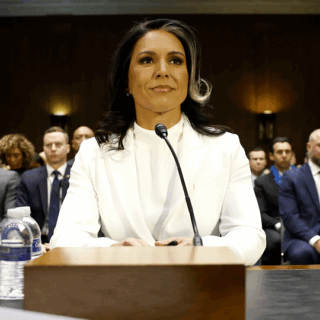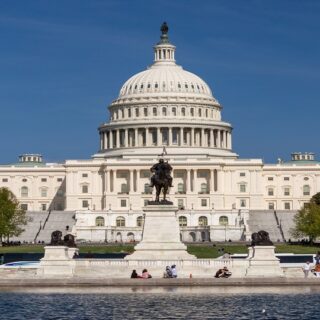
Who are the Old Catholics?
Most people have never even heard of them.
Today we have the opportunity to ask a few questions to Archbishop Metropolitan Pavel Begichev, General Secretary of the World Council of National Catholic Churches, the largest conservative Old Catholic association in Europe.
— Monsignor Pavel, can you briefly tell us who the Old Catholics are?
Mons. P.B.
— Broadly speaking, the Old Catholic movement split from the Roman Catholic Church in the 1850s. When a group of Catholics rejected the decisions of the First Vatican Council, in particular the doctrine of the infallibility of the Pope in matters of faith and morality. This decision was recognized as a theological innovation, unacceptable to the Church. Therefore, the movement was called “Old Catholics”, i.e. Catholics who keep the “old” faith of the Church of Christ.
At the same time, our churches took a course towards rapprochement between the conservative apostolic Churches and overcoming schisms in the Church of Christ. Thus, the Old Catholics became closer in doctrine to the Eastern Orthodox Churches, becoming in fact the Orthodox Church of the Western Rite.
Our community received a second impetus from a movement that began in Brazil in August 1945, when the Bishop of the Roman Catholic Church, Carlos Duarte Costa, accused the Holy See of unofficially helping Nazi fugitives who had taken refuge in Brazil. He also believed that the celibacy of the priesthood is not necessary, that the dogma of the infallibility of the pope is false. As a result, due to so many disagreements, he had to leave the Catholic Church and register the Brazilian Catholic Apostolic Church, which identified itself with the conservative old Catholic movement.
Duarte Costa implemented a number of reforms of what he saw as problems in the Roman Catholic Church. Clerical celibacy was abolished. Rules for the liturgy was translated into the vernacular.
In total, Carlos Duarte Costa ordained eight bishops, two of whom (Salomâo Barbosa Ferraz and Orlando Arce-Moya) returned to the Roman Catholic Church and were received as bishops. Thus, Pope John XXIII testified to the absolute validity and effectiveness of the Sacraments performed by Bishop Duarte Costa.
From the successors of Duarte Costa received episcopal ordination and the priest of the Roman Catholic Church, Antonio José de Costa Raposo. He received a blessing to create a conservative Old Catholic community in Europe. It was to become an alternative to the liberal Old Catholic Union of Utrecht.
— And what is your difference from the Roman Catholics and the liberal Old Catholics of the Union of Utrecht?
Mons. P.B.
I think there are three main differences
First division (DISCIPLINARY) of the Roman Catholic Church – compulsory celibacy
Until the Second Lateran Council held 1139, it exists only one Catholic Church, with the Pope in Rome on the head. This council introduced compulsory celibacy and destroyed the millennial practice of marriage the church. After breaking the millennial practice of ordination of married, the Tradition of the Old Church, based on the testimony of the Gospels and the Apostles, was broken. This was the first diversion of the Church, in a disciplinary sense.
Second division (DOGMATIC) of the Roman Catholic Church – Pastor aeternus
Until the First Vatican Council held 1870, it still exists only one church jurisdiction of the Catholic Church, with the Pope in Rome on the head. But with dogmatic decree Pastor aeternus (about the infallibility [and juridic omnipotence] of the Bishop of Rome) the old church was definitely wounded, and that was not the same Church any more.
The history of the Church does not know one infallibility bishop, except Christ Jesus our infallible Lord. And the jurisdictional omnipotence of the bishops in Rome, if they existed, ceased with a schism in 1054, so it was pointless to declare it on the First Vatican Council in 1870., after a series of centuries of ecclesiastical independence of the Eastern Orthodox Churches. Unity can be created with love and understanding and not by unilateral dogmatic decrees like Pastor aeternus.
Third division (PASTORAL & SACRAMENTAL) of the Old Catholic Church of Utrecht Union
Utrecht union was one positive attempt to overcome a disciplinary and dogmatic division of Roman Catholic Church, but Utrecht Union, has fallen into a new pastoral and sacramental division, introducing the apostatic blessing of same-sex couples and ordination of women to the Holy Orders, and this is foreign to the two-millennium practice of the Church of Christ.
— And what do you suggest as an alternative?
Mons. P.B.
We think that our association — World Council of National Catholic Churches (WCNCC) — was the best and authentic solution.
Because of all the above, as a true return to the authenticity of Catholicism, the WCNCC was created to be community of national Catholic churches that remain on Catholic doctrine and tradition. The WCNCC was established at a meeting in Mafra, Portugal, from 22 to 25 October 2004.
The WCNCC bridges the discontinuity and manifests the continuity of authentic Catholicism. In this way the Catholic Church operates without flaws in the unity of the autocephalous ecclesiastical regions united in the World Council of National Catholic Churches, as one Catholic Church, originally founded by our Lord Jesus Christ and developed by his apostles and their successors in the Holy Spirit.
But what is your goal? Are you creating another church community? After all, Christianity is already quite divided!
Mons. P.B.
No, our goal is overcoming divisions among churches.
The splitting of the church is contrary to God’s will. All Church in the world is in a sad position because there is no unity between. We hope and pray the Holy Spirit to create Church unity again. Because that is the will of our Lord and Savior Jesus.
The issue of communion and jurisdiction among the churches is realized through dialogue between the Churches, which achieves its realization in the church intercommunion.
We perceive our churches not as another wall between Christian communities. Our Churches are a bridge between the Christian East and the Christian West.
We realize that the Church used the first thousand years of its history to become itself, to formulate its authentic theology and to protect its flock from heresies. The Church spent the second thousand years of its history dividing and building many walls between Christian communities. We, as the Church, must use the third thousand years of our history to answer the prayer of our Lord Jesus Christ: «That they all may be one; as thou, Father, art in me, and I in thee, that they also may be one in us: that the world may believe that thou hast sent me». (John 17:21)
— Well, thanks for your story. It remains to wish you success in this difficult task.
Mons. P.B.
Thank you. Success from God will be very useful to us.

Monsignor Pavel celebrates the Holy Mass in the oratory of St. Michael the Archangel in Moscow.





